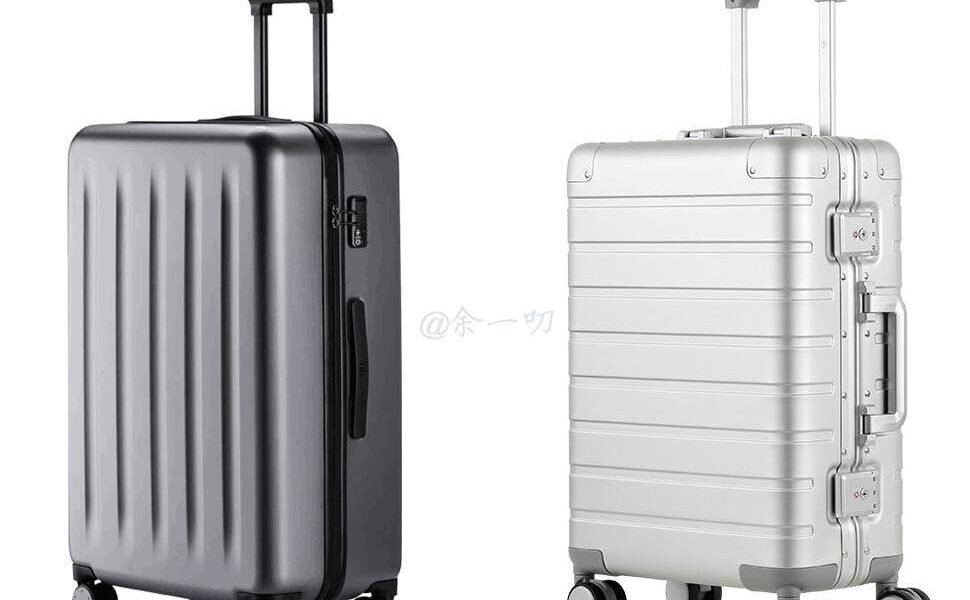Plastic vs. Metal Suitcases: A Battle of the Baggage
Plastic suitcases emerged six decades after their metal counterparts. As plastic processing technology advanced, this versatile material found its way into numerous applications, including luggage. Compared to the weight and cost of metal suitcases, plastic options offer a lighter and more affordable solution.
Today, over 90% of suitcases on the market are made from plastic, primarily using PP, PC, and ABS. Beyond cost-effectiveness, plastic suitcases lend themselves well to automated production, enabling faster manufacturing and greater flexibility.
Whether you’re launching a new luggage brand or starting a suitcase production business, this article will provide valuable insights to help you navigate this market.
Plastic Suitcases: Lightweight and Versatile
Plastic suitcases have long been a popular choice for travelers due to their lightweight nature and affordability. They are typically made from materials like polycarbonate, ABS, or polypropylene, which are known for their durability and impact resistance.
Pros of Plastic Suitcases:
Plastic suitcases offer several advantages. They are lightweight, making them easy to maneuver, specially on long journeys. Their reasonability makes them accessible to a wide range of budgets. Additionally, plastic suitcases come in a variety of styles, allowing for personal expression. Many models also feature expandable compartments, providing extra packing space when needed.
Cons of Plastic Suitcases:
While plastic suitcases are durable, they can be susceptible to scratches and dents, especially during rough handling by baggage handlers. Compared to metal suitcases, plastic options may offer less protection against theft and tampering. Additionally, the production of plastic can contribute to environmental pollution and plastic waste.
Metal Suitcases: Durable and Secure
Metal suitcases, often made from aluminum or magnesium alloys, offer a premium travel experience with their durability and security features.
Pros of Metal Suitcases:
Metal suitcases are known for their exceptional durability, making them highly resistant to damage from rough handling during travel. Their robust construction provides excellent security, protecting valuable belongings from theft and tampering. Additionally, metal suitcases often exude a sleek and modern aesthetic, appealing to travelers who value style.
Cons of Metal Suitcases:
Metal suitcases, while durable, come with some drawbacks. Their weight can be a significant factor for travelers, especially those with baggage weight restrictions. Additionally, metal suitcases tend to be more expensive than plastic options, particularly high-end brands. Although sturdy, metal suitcases can still dent if subjected to significant impact.
Craftsmanship Differences
From a manufacturing standpoint, the production processes for plastic and metal suitcases diverge significantly. Even if they share a similar design, the molds and machinery required for each type are entirely distinct.
Plastic suitcases are typically shaped through either vacuum blow molding or compression molding. The plastic material is heated and then molded, followed by cutting, punching, and the addition of accessories. Human labor is primarily needed for interior assembly, accessory installation, and quality control inspections.
In contrast, metal suitcases often involve die-casting various components using a combined mold. These individual parts are then assembled to form the suitcase shell. Manual intervention is required throughout the process, from stamping individual components to final assembly and inspection. This extensive reliance on human labor results in higher production costs compared to plastic suitcases.
Differences In Audience
The manufacturing processes for plastic and metal suitcases diverge significantly. Even if they share a similar design, the molds and machinery required are distinct.
Plastic suitcases are typically shaped through either vacuum blow molding or compression molding of heated plastic. Subsequently, they undergo cutting, punching, and the addition of accessories. Human labor is primarily needed for interior assembly, accessory installation, and quality control.
In contrast, metal suitcases often involve die-casting parts in a combined mold. These individual components are then assembled to form the suitcase shell. Manual intervention is required throughout the process, from stamping individual parts to final assembly and inspection. This intensive labor involvement contributes to higher production costs compared to plastic suitcases.
Target Market Differences:
The consumer base for plastic and metal suitcases also differs. High-end aluminum suitcases often appeal to affluent consumers seeking luxury travel items. Conversely, plastic suitcases, particularly budget-friendly options, are more popular among casual travelers and those on a tighter budget. This distinction in target markets inevitably leads to price disparities, with metal suitcases typically costing 2 to 10 times more than their plastic counterparts.







